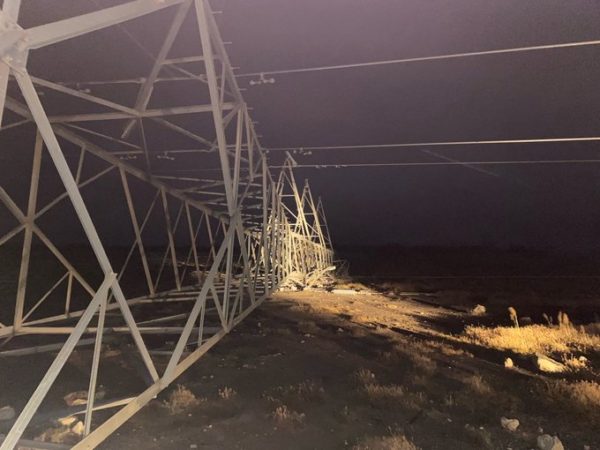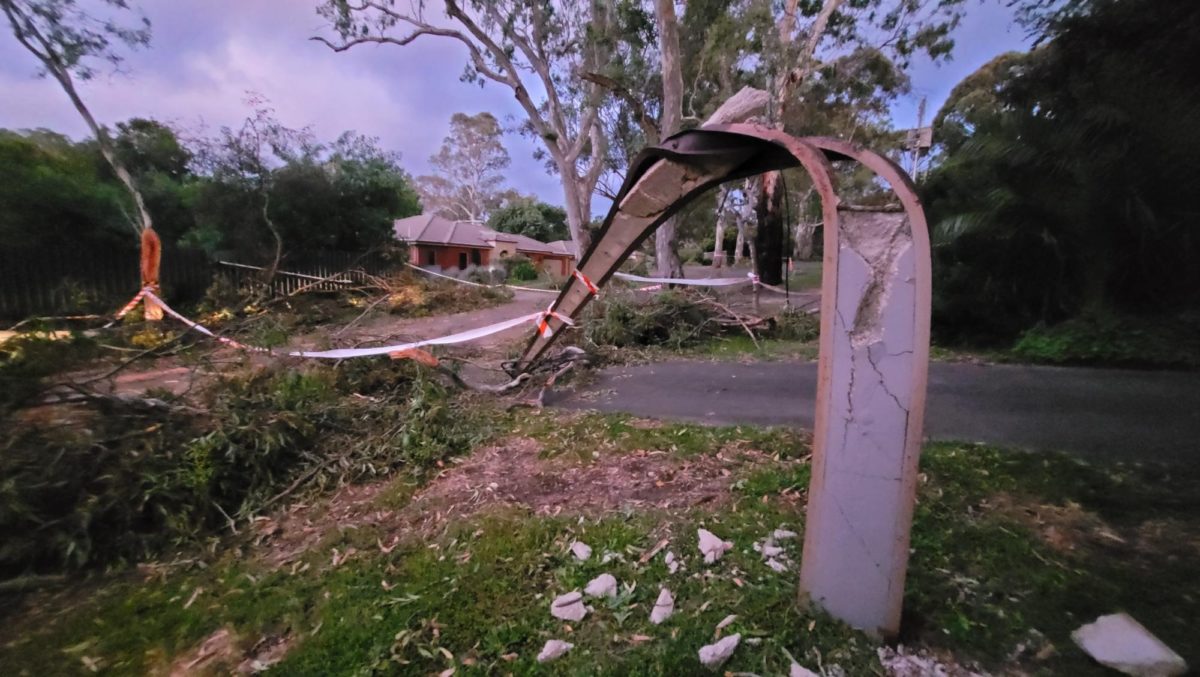Authorities encouraged South Australians to turn off their rooftop solar systems “as a last resort” to maintain grid security after wild storms brought down a transmission tower and caused multiple transmission lines to trip, islanding the state from the rest of the National Electricity Market (NEM).
South Australia’s transmission network owner ElectraNet said a fallen transmission tower near Tailem Bend caused both circuits on the 275 kV the interconnector with Victoria (VIC) to trip, disconnecting the state’s grid from the NEM at 4.40pm on Nov. 12.
“Until the damaged tower is repaired, power flows to and from VIC are constrained to zero, which will require curtailment of rooftop solar to maintain system stability,” ElectraNet said in a statement at the time. “We are liaising closely with the Australian Energy Market Operator (AEMO) and will continue to closely monitor the state’s high-voltage transmission network.”
With South Australia – which made headlines in 2021 when it became the first interconnected power system of its size (1 to 3 GW) to have 100% of its demand met by 100% PV – islanded from the NEM and high rooftop solar exports forecasted, AEMO issued a market notice declaring Distributed PV Contingency (DPVC) conditions in the state.
The market operator also postponed planned transmission maintenance outages, increased electricity demand by directing scheduled load into service and curtailed large-scale generation but the measures were not sufficient to manage the risk of major supply disruptions.
“Therefore, the curtailment of commercial, industrial and residential solar generation is required as a last resort to maintain grid stability,” AEMO said in a statement.

Image: ElectraNet
At 2pm on Nov. 13, South Australia’s electricity distributor SA Power Networks (SAPN) issued a notice calling for South Australians to switch off their solar systems.
“A further issue has emerged with SA’s power supply beyond the impact of yesterday’s storm,” SAPN said in a social media post. “The transmission connection with Victoria has been hit and this is affecting the ability of the national energy market operator to manage the balance between energy supply and demand in our state.”
“To assist, they have asked whether we can encourage customers to turn off solar panels. This action will help stabilise the energy system in South Australia. We understand there are complex issues with energy at the moment, but turning off your solar will be a big help. We will advise when it can be turned back on.”
That call came at 8.30pm on Nov. 13, with SAPN declaring “we are pleased to advise that customers who turned off their solar systems to help manage the balance between energy supply and demand can now reactivate them.”
While AEMO said the transmission network “remains in a secure operating state”, more than 33,000 properties across South Australia were without power on the morning of Nov. 14, with SAPN saying many will not be reconnected until at least Nov. 15.
South Australia was hit with more than 423,000 lightning strikes on the night of Nov. 13, while wind gusts were recorded at more than 100kmh.
SAPN received more than 500 reports of fallen wires while about 163,000 homes and businesses lost power in what is being described as the worst outage since the state-wide blackout in 2016.
In the 2016 incident, storms damaged major transmission lines in the state’s mid-north which tripped most of the South Australian power grid, blacking out about 850,000 properties.
SAPN corporate affairs head Paul Roberts said this most recent event is in some ways worse than the 2016 event because it would take “a lot longer” to fix as the network had to be rebuilt, not just reconnected.
“Due to the large number of faults, rebuilding and repairing the network and restoring power will continue over the week,” he said.
“SA Power Networks has mobilised all possible resources and has called in interstate field resources to assist. We expect to have the vast bulk of customers back with supply by the end of Tuesday (Nov. 15), but the reality is some may be off for longer.”
This content is protected by copyright and may not be reused. If you want to cooperate with us and would like to reuse some of our content, please contact: editors@pv-magazine.com.









1 comment
By submitting this form you agree to pv magazine using your data for the purposes of publishing your comment.
Your personal data will only be disclosed or otherwise transmitted to third parties for the purposes of spam filtering or if this is necessary for technical maintenance of the website. Any other transfer to third parties will not take place unless this is justified on the basis of applicable data protection regulations or if pv magazine is legally obliged to do so.
You may revoke this consent at any time with effect for the future, in which case your personal data will be deleted immediately. Otherwise, your data will be deleted if pv magazine has processed your request or the purpose of data storage is fulfilled.
Further information on data privacy can be found in our Data Protection Policy.